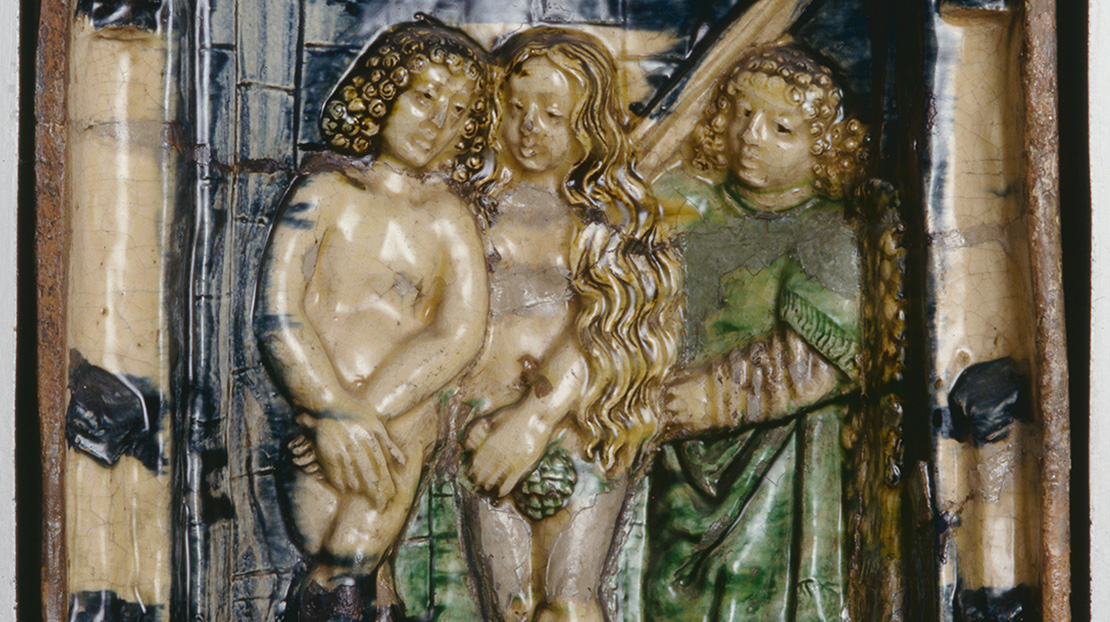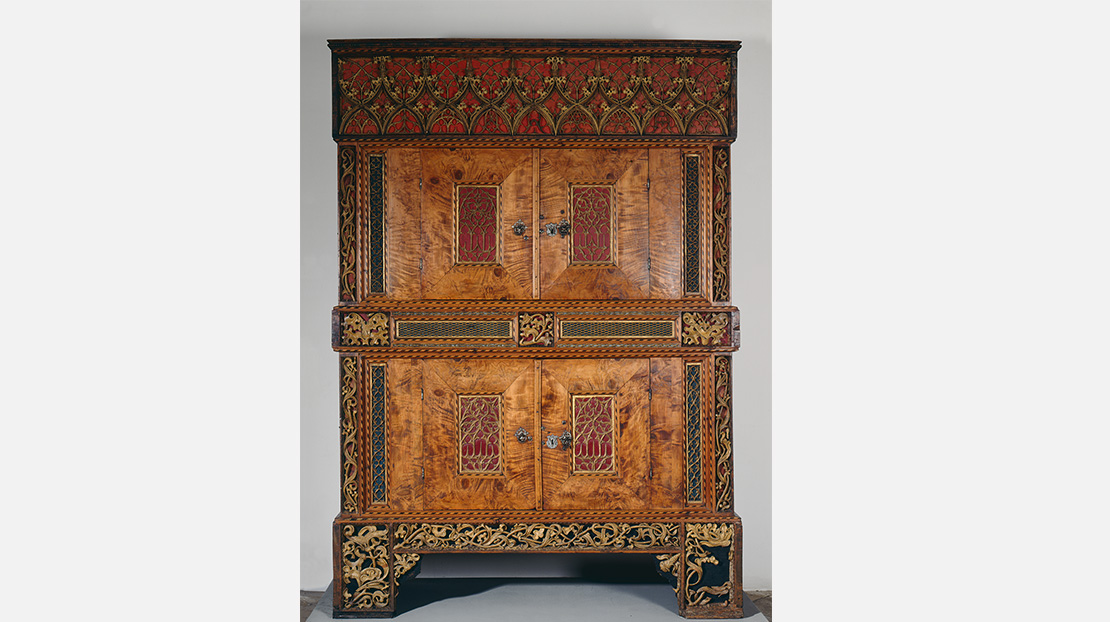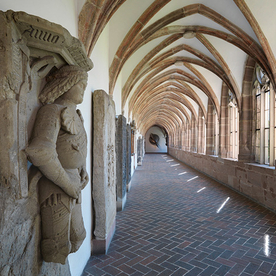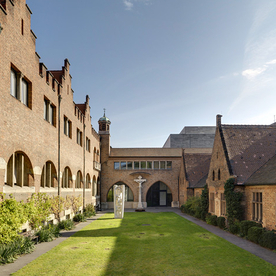Everyday culture up to 1700

In the monks' dwellings on the north wing of the large cloister of the Nuremberg Carthusian monastery, many objects are presented that shed light on life principally in the higher social strata in the Late Middle Ages and Early Modern Age. They include informative elements of interior architecture such as wooden columns and pillars, decorated cleats and beams, doors, locks and keys, as well as other ornate metalwork. Furniture – table, cupboard and chest – is also featured, as are textiles such as dorsal tapestries and sumptuous towels. The exhibition also displays fittings such as lamps and utensils made of glass, clay and metal. Artistically decorated boxes and caskets impart how precious items were kept safe. Book covers, a rare girdle book from the Middle Ages, small winged altarpieces and pilgrim badges remind us that the living room was always a place of private worship.
Tiled stoves were a feature of the typical living and assembly room of the Middle Ages. The museum has an interesting collection showing the history of this style of room heater, developed in the 13th century in the eastern Alpine region. In addition to richly decorated stoves of the 16th and 17th century, a representative selection of tiles can be seen, which trace the development from simple beaker- or bowl-shaped tiles to textured half-cylinder tiles. Particularly important pieces include the large tiles with images, from the "workshop of the Viennese vestry stove" (ca. 1490), tiles depicting saints, from Lüneburg (ca. 1515), and interior architectures in perspective, from a Nuremberg workshop (ca. 1540).
Examples of objects
Exhibition rooms

Information and Services
Plan Your Visit
Opening Times
Location and Approach
GNM Museum Shop
FAQ
Library
Branches
Contact



